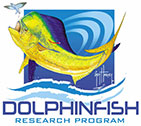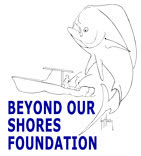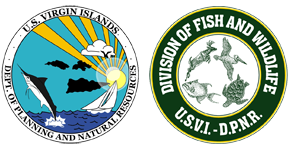What is Fish Aggregating Devices (FADs)?
Fish are often attracted to objects floating in the water, which provide them with food, shelter, and visual landmarks in otherwise indistinct areas. Different types of artificial fish aggregating devices (FADs) have been used around the world to concentrate game fish species and enhance sport fishing activity.
FADs work by providing a structure in the water that is first colonized by algae species and invertebrates such as barnacles. Small fish such as bait fish species are attracted to the algae and invertebrates as a food source. These species may also use the buoy for protection from larger fish, which are attracted to the area to prey on the smaller fish. Ultimately, large pelagic game fish species can be drawn to the FADs, making them an attractive target to recreational anglers. FADs also enhance sport fishing opportunities by reducing fuel costs and time spent searching for fish and by increasing fishing efficiency, providing a more enjoyable fishing experience.
USVI FADs
FADs have been installed, maintained, and monitored in the waters surrounding the U.S. Virgin Islands by the Department of Planning and Natural Resources’ Division of Fish and Wildlife (DFW) for 30 years. The USVI uses FAD designs consisting of buoys that either sit on the surface or are submerged approximately 50 feet below the surface. Both of these designs have advantages and attract sport fish species. All FADs are inspected and monitored on a quarterly basis to allow for replacement of any worn components before they break and to document fish populations observed around the buoys.
There are currently three FADs in the waters surrounding the USVI. Two are located on the fishing grounds of the North Drop (north of St. Thomas/St. John) and one is located to the south of St. Thomas. In addition, DFW plans to install 2 surface FADs around St. Croix and 2 additional surface FADs around St. Thomas and St. John within the next few months.
Follow our USVI Fish Aggregating Devices Facebook page for updates, GPS coordinates of FADs, and more! US Virgin Islands Fishing Information Network
If you go fishing around the USVI FADs, please report your catch using our online recreational fishing survey form https://form.jotform.co/80293727553866 and be sure to note the name of the FAD where you caught your fish! Click here for more information about reporting your catch.
The USVI FAD Program is funded by the U.S. Fish and Wildlife Service Sport Fish Restoration Fund. FAD deployments are authorized by Department of the Army Permits SAJ-2009-00670 and SAJ-2009-00674.
What species are found around FADs?
FADs create new habitat for coastal and offshore pelagic sport fish species. Depending on factors such as season, location, environmental conditions, and fishing gear, you may catch any of the following game fish species near FADs:
- Dolphin fish
- Wahoo
- Tunas (Yellowfin Tuna, Blackfin Tuna, Skipjack Tuna, Bigeye Tuna, Little Tunny)
- Jacks (Rainbow Runner, Blue Runner, Horse-Eye Jack, Crevalle Jack)
- Mackerel (King Mackerel, Cero Mackerel)
- Billfish (Blue Marlin, White Marlin, Sailfish, Swordfish)
- And more!
Dolphinfish Tagging Program

 In 2017, the USVI Division of Fish and Wildlife partnered with the Dolphinfish Research Program (DRP) and the Beyond Our Shores Foundation to expand their dolphinfish tagging program to the U.S. Virgin Islands. Polyethylene dart tags are distributed to recreational, charter, and commercial fishers who volunteer to participate in the program. The anglers tag dolphinfish they catch near the FADs, record the length of the fish, and release the fish unharmed back into the water. The anglers then submit the tagging location and related information back to the Dolphinfish Research Program and Beyond Our Shores. Anglers who capture a fish that has already been tagged may submit a Recapture Report at https://beyondourshores.org/report-recapture/. This important program helps to collect information on dolphinfish movements, range, and recreational fishing activity around the Caribbean and wider Atlantic region.
In 2017, the USVI Division of Fish and Wildlife partnered with the Dolphinfish Research Program (DRP) and the Beyond Our Shores Foundation to expand their dolphinfish tagging program to the U.S. Virgin Islands. Polyethylene dart tags are distributed to recreational, charter, and commercial fishers who volunteer to participate in the program. The anglers tag dolphinfish they catch near the FADs, record the length of the fish, and release the fish unharmed back into the water. The anglers then submit the tagging location and related information back to the Dolphinfish Research Program and Beyond Our Shores. Anglers who capture a fish that has already been tagged may submit a Recapture Report at https://beyondourshores.org/report-recapture/. This important program helps to collect information on dolphinfish movements, range, and recreational fishing activity around the Caribbean and wider Atlantic region.
If you are an angler based in the USVI and would like to participate in the dolphinfish tagging program, click here to contact us and obtain a free tagging kit.
